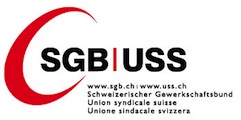Publications des institutions partenaires
bottom tariff cutting
This paper provides an empirical assessment of race-to-the-bottom unilateralism. It suggests that decades of unilateral tariff cutting in Asia‟s emerging economies have been driven by a competition to attract FDI from Japan. Using spatial econometrics, I show that tariffs on parts and components, a crucial locational determinant for Japanese firms, converged across countries...
Institution partenaire
Institut de hautes études internationales et du développement
/ 09/08/2011
bottom tariff cutting
This paper provides an empirical assessment of race-to-the-bottom unilateralism. It suggests that decades of unilateral tariff cutting in Asia‟s emerging economies have been driven by a competition to attract FDI from Japan. Using spatial econometrics, I show that tariffs on parts and components, a crucial locational determinant for Japanese firms, converged across countries...
Institution partenaire
Institut de hautes études internationales et du développement
/ 09/08/2011
bottom tariff cutting
This paper provides an empirical assessment of race-to-the-bottom unilateralism. It suggests that decades of unilateral tariff cutting in Asia‟s emerging economies have been driven by a competition to attract FDI from Japan. Using spatial econometrics, I show that tariffs on parts and components, a crucial locational determinant for Japanese firms, converged across countries...
Institution partenaire
Institut de hautes études internationales et du développement
/ 09/08/2011
bottom tariff cutting
This paper provides an empirical assessment of race-to-the-bottom unilateralism. It suggests that decades of unilateral tariff cutting in Asia‟s emerging economies have been driven by a competition to attract FDI from Japan. Using spatial econometrics, I show that tariffs on parts and components, a crucial locational determinant for Japanese firms, converged across countries...
Institution partenaire
Institut de hautes études internationales et du développement
/ 09/08/2011
bottom tariff cutting
This paper provides an empirical assessment of race-to-the-bottom unilateralism. It suggests that decades of unilateral tariff cutting in Asia‟s emerging economies have been driven by a competition to attract FDI from Japan. Using spatial econometrics, I show that tariffs on parts and components, a crucial locational determinant for Japanese firms, converged across countries...
Institution partenaire
Institut de hautes études internationales et du développement
/ 09/08/2011
bottom tariff cutting
This paper provides an empirical assessment of race-to-the-bottom unilateralism. It suggests that decades of unilateral tariff cutting in Asia‟s emerging economies have been driven by a competition to attract FDI from Japan. Using spatial econometrics, I show that tariffs on parts and components, a crucial locational determinant for Japanese firms, converged across countries...
Institution partenaire
Institut de hautes études internationales et du développement
/ 09/08/2011
bottom tariff cutting
This paper provides an empirical assessment of race-to-the-bottom unilateralism. It suggests that decades of unilateral tariff cutting in Asia‟s emerging economies have been driven by a competition to attract FDI from Japan. Using spatial econometrics, I show that tariffs on parts and components, a crucial locational determinant for Japanese firms, converged across countries...
Institution partenaire
Institut de hautes études internationales et du développement
/ 09/08/2011
bottom tariff cutting
This paper provides an empirical assessment of race-to-the-bottom unilateralism. It suggests that decades of unilateral tariff cutting in Asia‟s emerging economies have been driven by a competition to attract FDI from Japan. Using spatial econometrics, I show that tariffs on parts and components, a crucial locational determinant for Japanese firms, converged across countries...
Institution partenaire
Institut de hautes études internationales et du développement
/ 09/08/2011
bottom tariff cutting
This paper provides an empirical assessment of race-to-the-bottom unilateralism. It suggests that decades of unilateral tariff cutting in Asia‟s emerging economies have been driven by a competition to attract FDI from Japan. Using spatial econometrics, I show that tariffs on parts and components, a crucial locational determinant for Japanese firms, converged across countries...
Institution partenaire
Institut de hautes études internationales et du développement
/ 09/08/2011
bottom tariff cutting
This paper provides an empirical assessment of race-to-the-bottom unilateralism. It suggests that decades of unilateral tariff cutting in Asia‟s emerging economies have been driven by a competition to attract FDI from Japan. Using spatial econometrics, I show that tariffs on parts and components, a crucial locational determinant for Japanese firms, converged across countries...
Institution partenaire
Institut de hautes études internationales et du développement
/ 09/08/2011
bottom tariff cutting
This paper provides an empirical assessment of race-to-the-bottom unilateralism. It suggests that decades of unilateral tariff cutting in Asia‟s emerging economies have been driven by a competition to attract FDI from Japan. Using spatial econometrics, I show that tariffs on parts and components, a crucial locational determinant for Japanese firms, converged across countries...
Institution partenaire
Institut de hautes études internationales et du développement
/ 09/08/2011
bottom tariff cutting
This paper provides an empirical assessment of race-to-the-bottom unilateralism. It suggests that decades of unilateral tariff cutting in Asia‟s emerging economies have been driven by a competition to attract FDI from Japan. Using spatial econometrics, I show that tariffs on parts and components, a crucial locational determinant for Japanese firms, converged across countries...
Institution partenaire
Institut de hautes études internationales et du développement
/ 09/08/2011
bottom tariff cutting
This paper provides an empirical assessment of race-to-the-bottom unilateralism. It suggests that decades of unilateral tariff cutting in Asia‟s emerging economies have been driven by a competition to attract FDI from Japan. Using spatial econometrics, I show that tariffs on parts and components, a crucial locational determinant for Japanese firms, converged across countries...
Institution partenaire
Institut de hautes études internationales et du développement
/ 09/08/2011
bottom tariff cutting
This paper provides an empirical assessment of race-to-the-bottom unilateralism. It suggests that decades of unilateral tariff cutting in Asia‟s emerging economies have been driven by a competition to attract FDI from Japan. Using spatial econometrics, I show that tariffs on parts and components, a crucial locational determinant for Japanese firms, converged across countries...
Institution partenaire
Institut de hautes études internationales et du développement
/ 09/08/2011
bottom tariff cutting
This paper provides an empirical assessment of race-to-the-bottom unilateralism. It suggests that decades of unilateral tariff cutting in Asia‟s emerging economies have been driven by a competition to attract FDI from Japan. Using spatial econometrics, I show that tariffs on parts and components, a crucial locational determinant for Japanese firms, converged across countries...
Institution partenaire
Institut de hautes études internationales et du développement
/ 09/08/2011
bottom tariff cutting
This paper provides an empirical assessment of race-to-the-bottom unilateralism. It suggests that decades of unilateral tariff cutting in Asia‟s emerging economies have been driven by a competition to attract FDI from Japan. Using spatial econometrics, I show that tariffs on parts and components, a crucial locational determinant for Japanese firms, converged across countries...
Institution partenaire
Institut de hautes études internationales et du développement
/ 09/08/2011
bottom tariff cutting
This paper provides an empirical assessment of race-to-the-bottom unilateralism. It suggests that decades of unilateral tariff cutting in Asia‟s emerging economies have been driven by a competition to attract FDI from Japan. Using spatial econometrics, I show that tariffs on parts and components, a crucial locational determinant for Japanese firms, converged across countries...
Institution partenaire
Institut de hautes études internationales et du développement
/ 09/08/2011
bottom tariff cutting
This paper provides an empirical assessment of race-to-the-bottom unilateralism. It suggests that decades of unilateral tariff cutting in Asia‟s emerging economies have been driven by a competition to attract FDI from Japan. Using spatial econometrics, I show that tariffs on parts and components, a crucial locational determinant for Japanese firms, converged across countries...
Institution partenaire
Institut de hautes études internationales et du développement
/ 09/08/2011
bottom tariff cutting
This paper provides an empirical assessment of race-to-the-bottom unilateralism. It suggests that decades of unilateral tariff cutting in Asia‟s emerging economies have been driven by a competition to attract FDI from Japan. Using spatial econometrics, I show that tariffs on parts and components, a crucial locational determinant for Japanese firms, converged across countries...
Institution partenaire
Institut de hautes études internationales et du développement
/ 09/08/2011
bottom tariff cutting
This paper provides an empirical assessment of race-to-the-bottom unilateralism. It suggests that decades of unilateral tariff cutting in Asia‟s emerging economies have been driven by a competition to attract FDI from Japan. Using spatial econometrics, I show that tariffs on parts and components, a crucial locational determinant for Japanese firms, converged across countries...
Institution partenaire
Institut de hautes études internationales et du développement
/ 09/08/2011
Pages
Le portail de l'information économique suisse
© 2016 Infonet Economy












